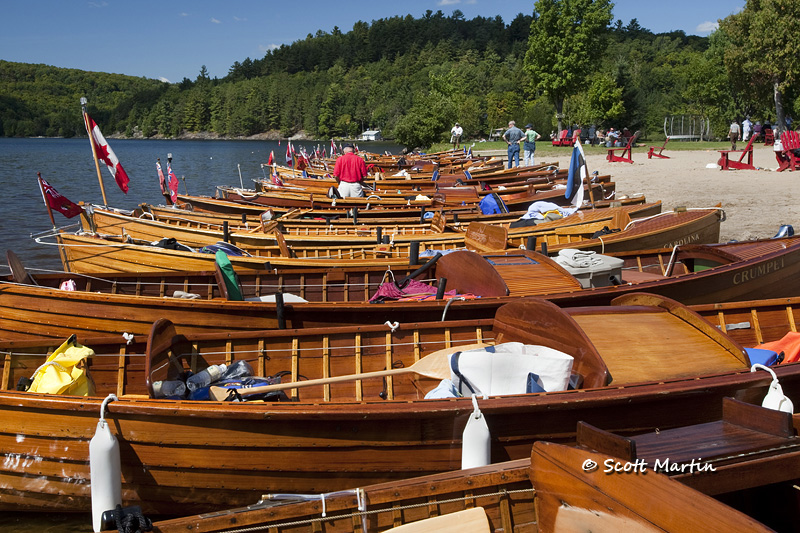
by Scott Martin Photography | Jan 28, 2011 | Blog, Transportation
The Disappearing Propeller Boat is one of the most unusual boats to ever ply the Canadian waters, almost exclusively in the Muskoka Lakes. The Dis-Pro Boat or more affectionately known as the “Dippy” was designed and built in Port Carling, Ontario between 1914 and 1926 although a few were also built in Lindsay and Gravenhurst, Ontario into the early 1950’s. Their uniqueness and low production numbers have made the Dippy very collectible commodity in the Muskokas and a pristine restored early model built at the Disappearing Propeller Boat Company in Port Carling can fetch many tens of thousands of dollars.
The Dippy is not unlike a big canoe fitted with a small displacement engine. The beauty of the design is that the drive shaft and propeller can be retracted into the hull while under power. The boat is still maneuverable with only about an inch of the prop exposed allowing the Dippy to function in very shallow water just like a canoe. The propeller can be retracted by the operator or if the drive shaft hits an underwater obstruction it moves up into the protective housing.
The dippy is ‘steered’ by a stern mounted rudder which is manually controlled by the captain using a simple yet effective rope & pulley system.
You can read more about Dippies at www.dis-pro.com or at Dave’s Disappearing Propeller Boat Site
I was fortunate to photograph a number of Dippies this summer when a Dippy Owners Club stopped at a beach near our cottage for a picnic lunch. I trust you enjoy these photographs of a very unique and rarely seen boat that is a vital part of Muskoka’s rich history.

This next image is taken from the dock at our cottage as the Dippies left Mary Lake heading up the Muskoka River for Huntsville.
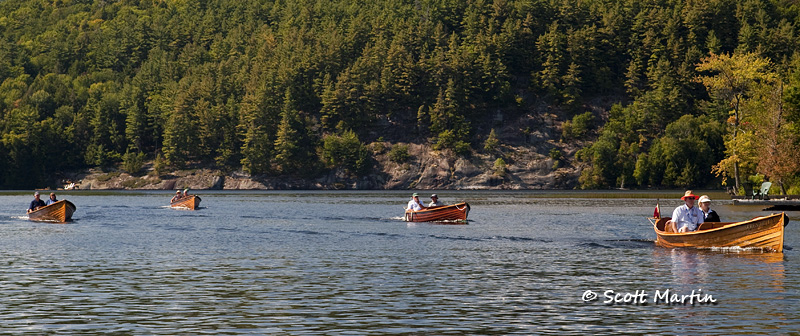
Amazing wood work is a hallmark of every Dippy
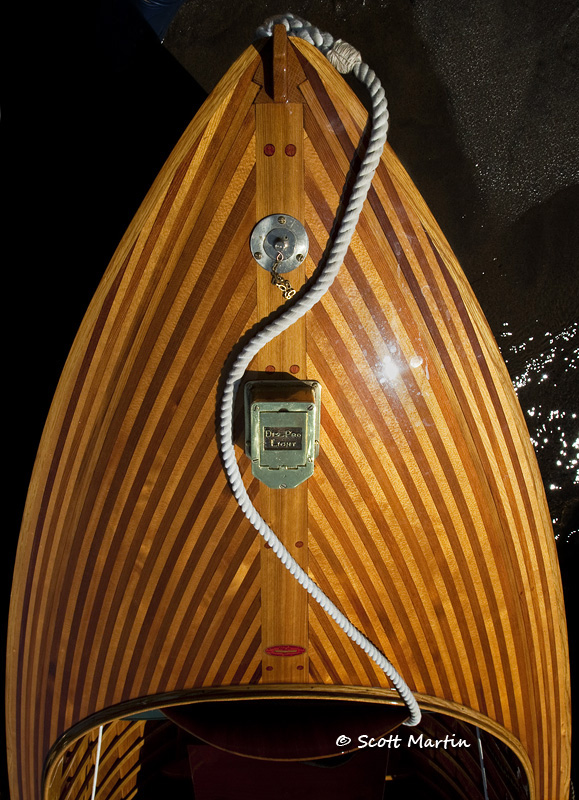
.
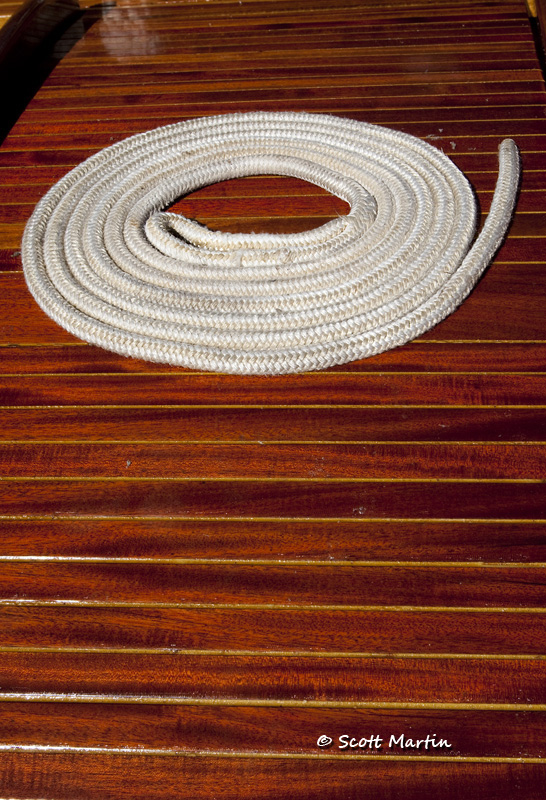
.
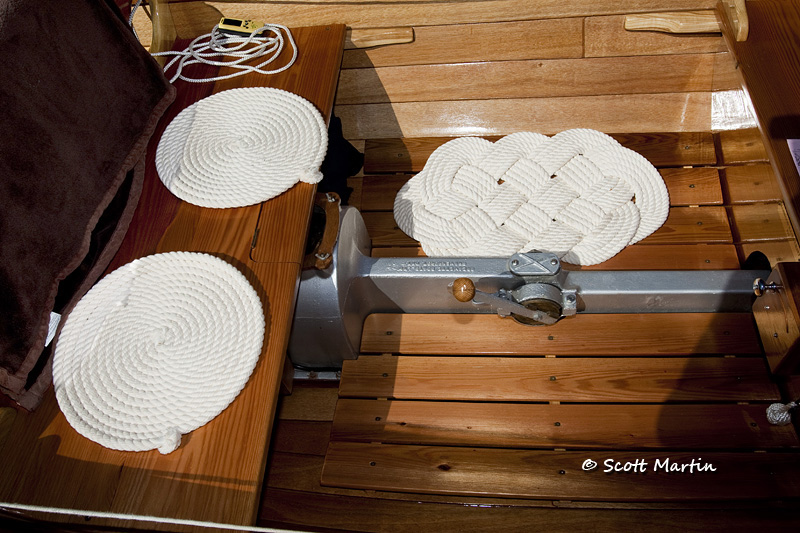
.
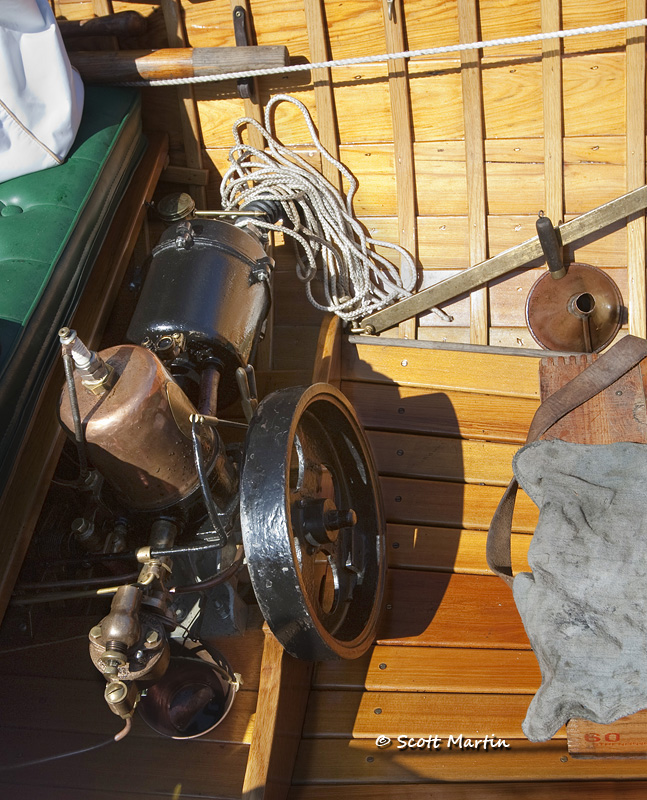
.
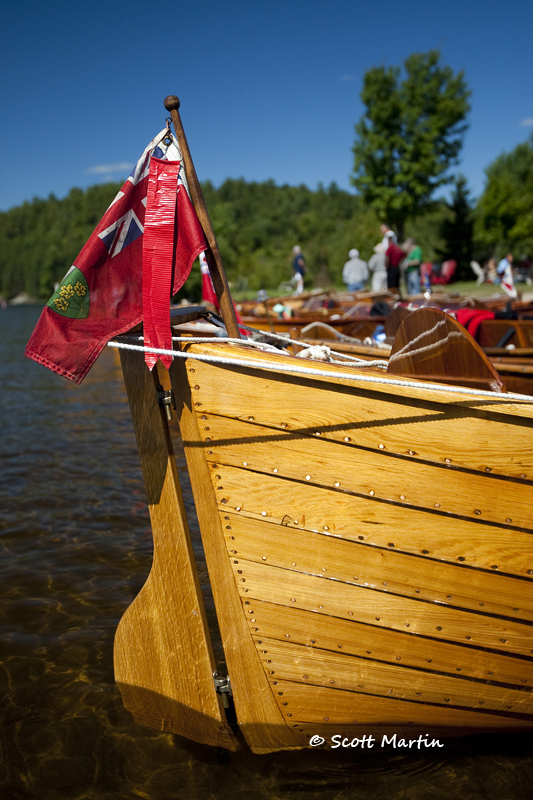
.
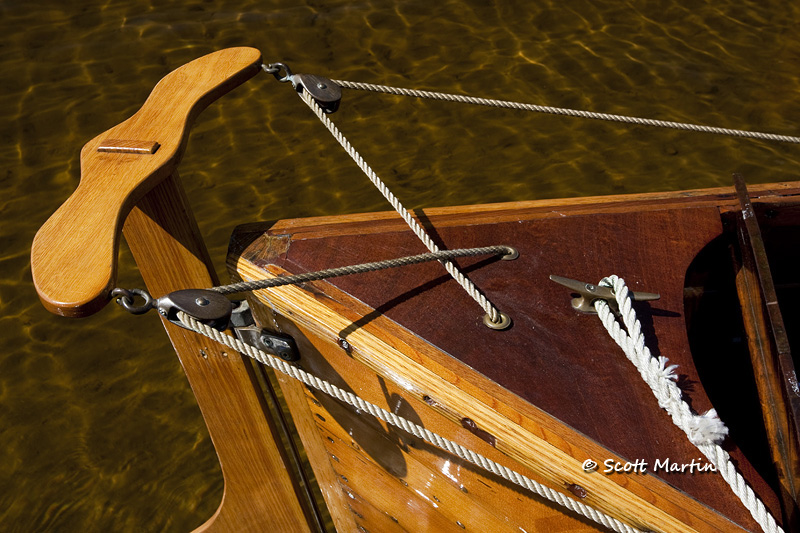
.
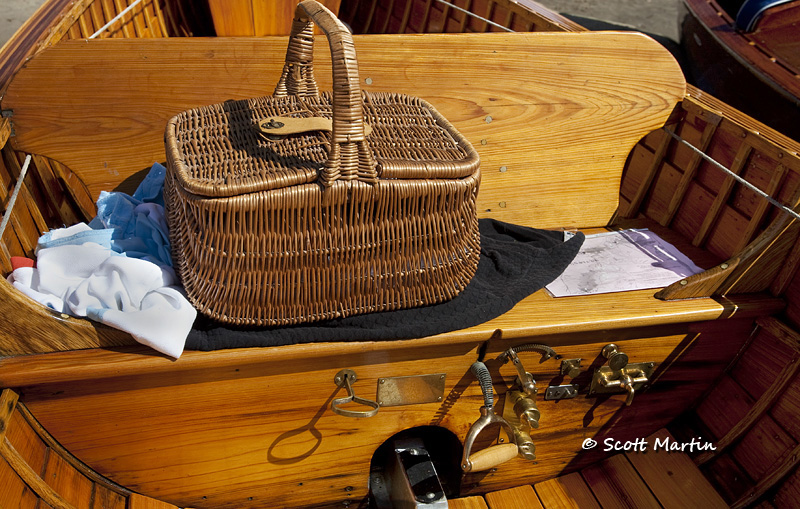
.
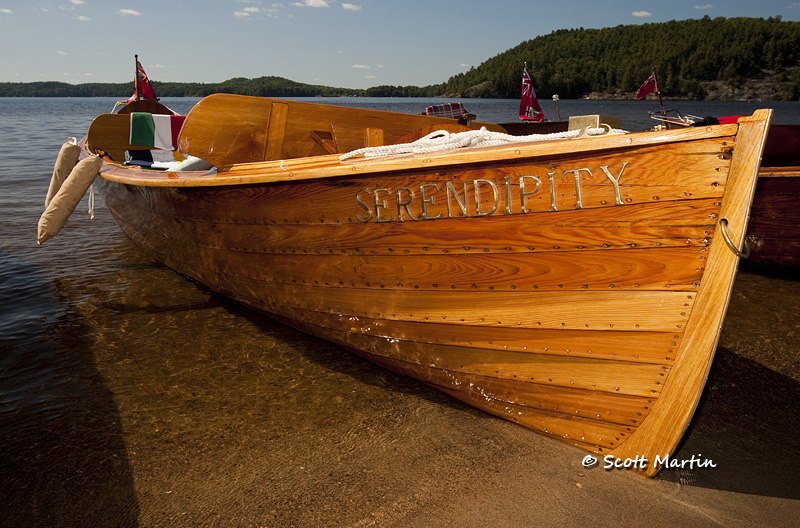
.
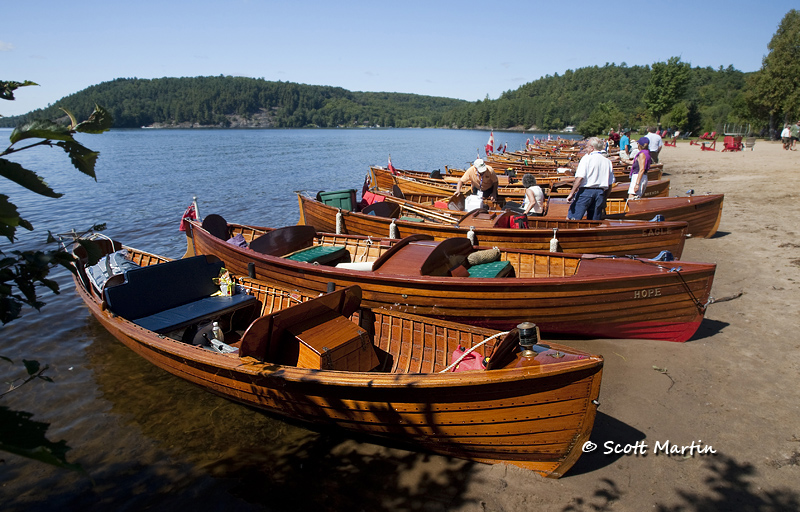
.
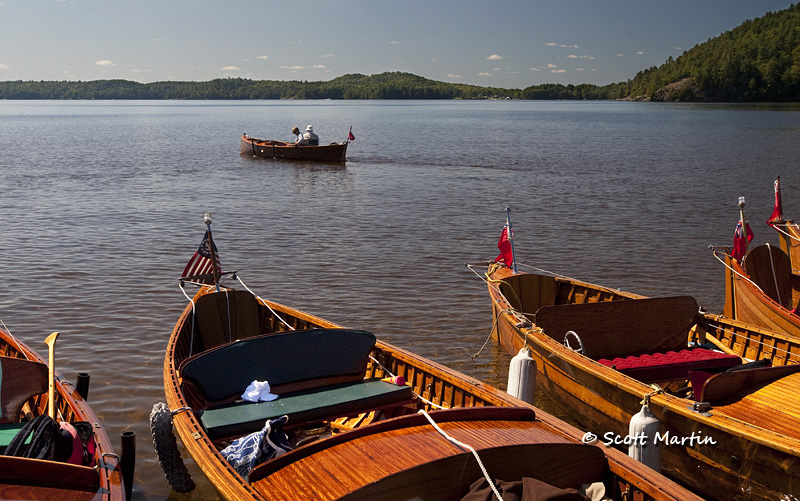
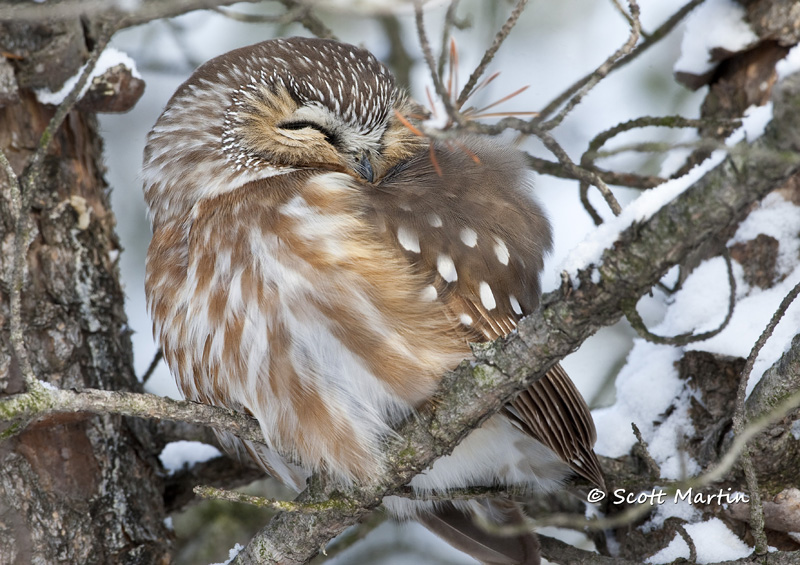
by Scott Martin Photography | Jan 26, 2011 | Birds, Blog, Raptors
This past Friday my good friend Arni picked me up at 6:00 a.m. and we headed out for a day of birding and photography around Eastern Ontario. I thought six was early but Arni left his place at four! The general goal for the day was to find two different Boreal species, the Boreal Owl and the Boreal Chickadee. Boreal refers to the Boreal Forest which encompasses the Northern sections of the Northern Hemisphere, however the Boreal Forest does extend southwards in parts of Ontario, including Algonquin Park. Severe weather in the North often displaces Boreal species southward in the winter months and this is what brings the odd Boreal Owl & Boreal Chickadee to South Eastern Ontario at this time of the year.
Unfortunately we didn’t find either of the birds we were looking for but nevertheless it was a fabulous day, lots of fun and we still have two birds to look for again on the next excursion. We did however find a couple of Saw Whet Owls and one Long Eared Owl plus a number of raptors including American Bald Eagles, Red Tailed Hawks and Rough Legged Hawks. We also saw a number of winter water fowl, the highlight being a flock of several hundred Long Tailed Ducks.
The little Saw Whet Owl looked like Sleeping Beauty, well hidden deep in a Jack Pine tree.

The feather detail around the eye and facial disc is truly amazing.
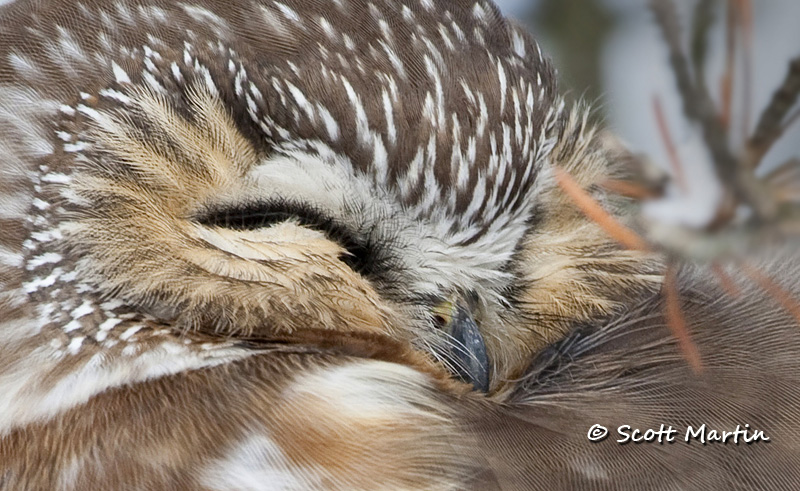
Although not a great image, this Red Tailed Hawk let us get fairly close, even though he was perched on the top of a hydro pole.
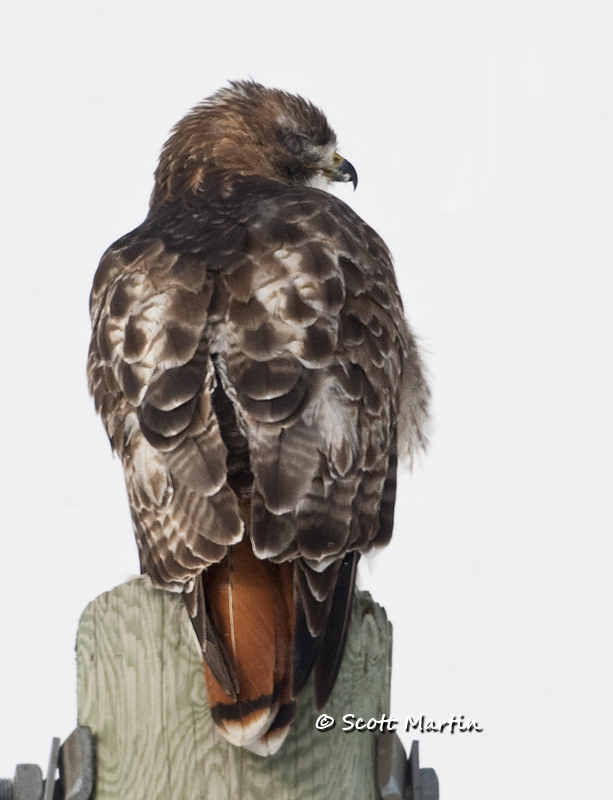
More owl images can be seen in the Owls Gallery and you can find more Red Tailed Hawks in the Hawks, Falcons & Kites Gallery
This week I made a Facebook page for
Scott Martin Photography which you can see by clicking on the Facebook Icon at the top of the right side panel of the blog. If you are on Facebook please follow the SMP page by clicking on the ‘Like’ page button from your Facebook home page. One of the purposes of having an SMP Facebook page is to allow for discussion on various photography related topics. If you have any questions or topics for discussion please feel free to post it on the SMP Facebook page and we will be glad to address your comments, ideas or concerns.
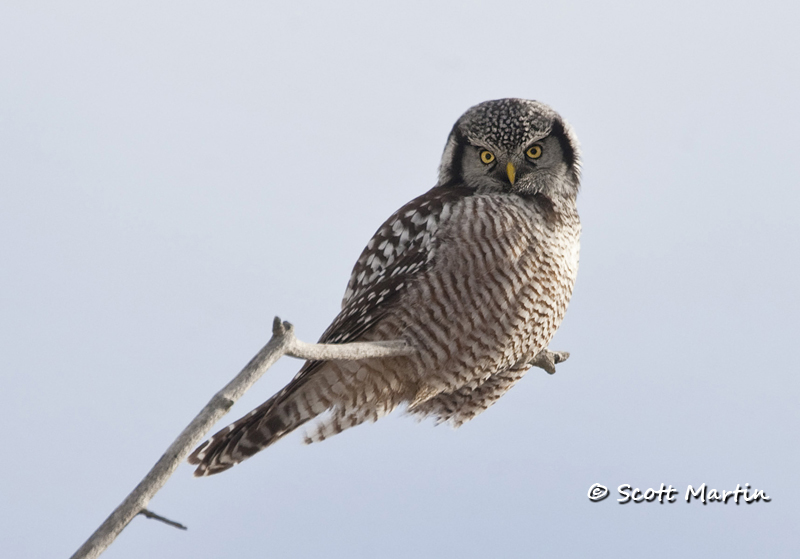
by Scott Martin Photography | Jan 15, 2011 | Blog, Raptors
Happy New Year to all and I trust you have enjoyed a terrific Christmas season. My photography New Years resolution was to get some decent shots of three owl species that we don’t often see in Southern Ontario…..a Snowy Owl, a Great Gray Owl and a Northern Hawk Owl. Fortunately I was able to cross the Northern Hawk Owl off the list after driving about an hour north of Oshawa last Friday morning. Leaving before sunrise I met up with my friend Arni – make sure you check out his website Nature’s Wonders in Pixels – and we were able to watch and photograph a Northern Hawk Owl for three or four hours.
The Northern Hawk Owl is a medium-sized owl (~16″ long with a 28″ wingspan) that typically lives in the Boreal Forest regions of Northern Canada where it feeds primarily on small mammals like mice and voles, however in the winter months when food becomes scarce they will also eat other birds. Although Northern Hawk Owls are non-migratory the lack of food availability during the winter months in the north displaces the owls southward which is what brings a few them to Southern Ontario this time of the year.
Northern Hawk Owls have amazing eye sight, being able to spot prey up to 800 meters away. They can also find and seize mice & voles under one foot of snow, which is truly remarkable. Northern Hawk Owls are monogamous and usually nest in tree cavities although they will take over nests of other large birds. They don’t construct their own nests. Both parents look after feeding the young however the male feeds the female for the week before she lays her eggs and for the 25-30 days she incubates them.
The Hawk Owl gets its name because it flies much like a hawk, low with quick shallow wing beats and gliding. It can also hover. Interestingly, they have the longest tails of any North American owl which gives them the look of a hawk.
Perhaps because Northern Hawk Owls live in the north and don’t see people very often, they show little fear of man and are surprisingly approachable. They seem to be very inquisitive and are birds with many different facial expressions which I’ve tried to illustrate in the following images.

.
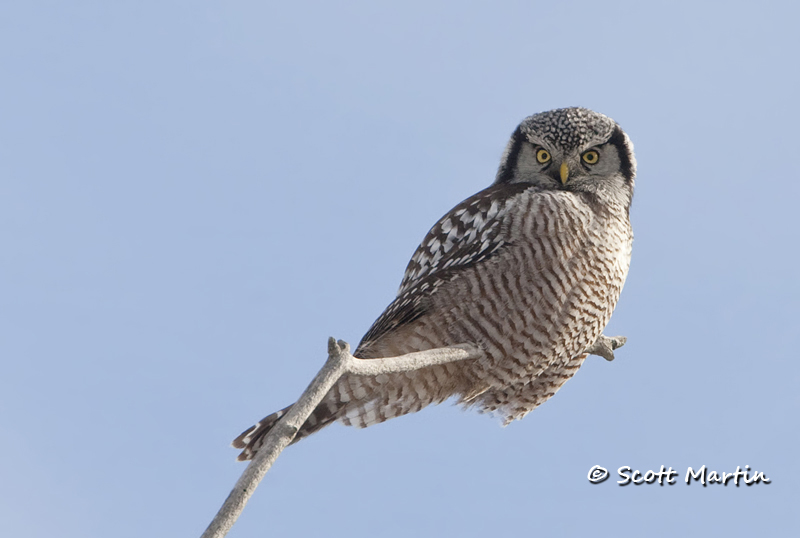
.
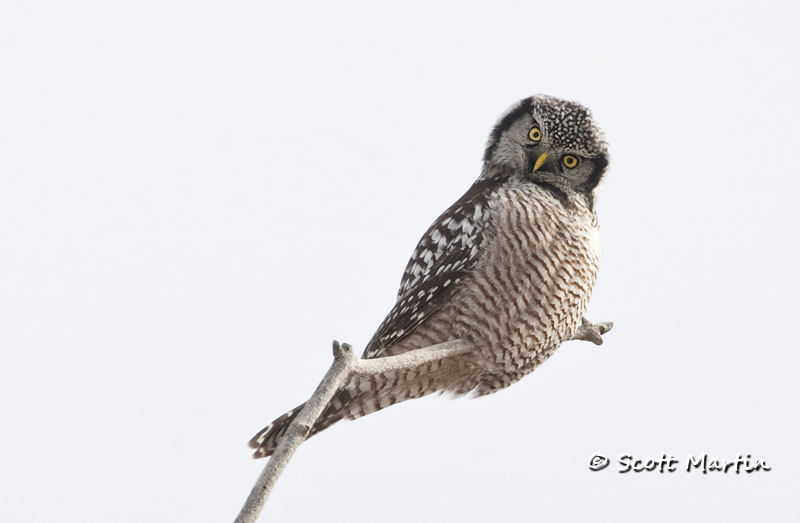
.
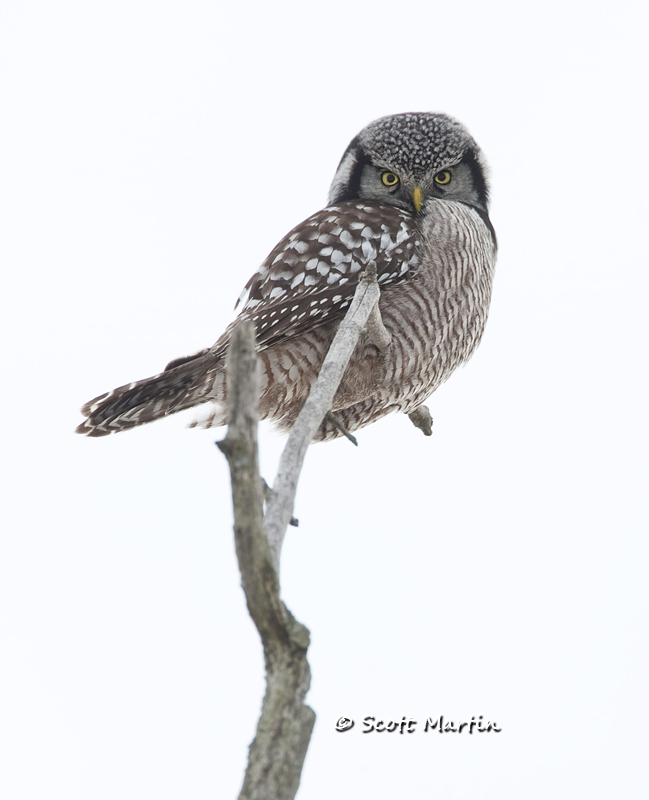
.
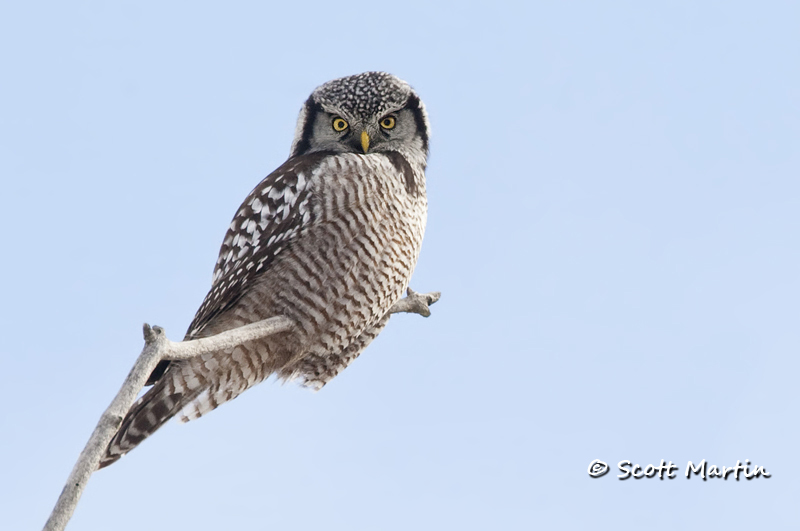
All of these images were taken with a 500/f4 lens with a 1.4 x TC for an effective focal length of 700mm. If you are interested in seeing other owls you can find them in the Owl Gallery
























Follow Scott Martin Photography